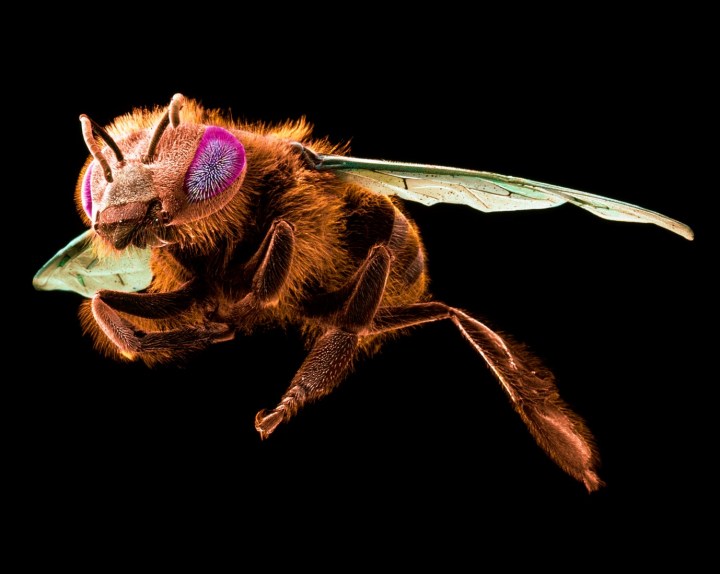In this post Adriana De Palma discusses her recent paper ‘Ecological traits affect the sensitivity of bees to land-use pressures in European agricultural landscapes’. The article is open access courtesy of Imperial College London.
For International Women’s Day, we asked Adriana about her career in science and the challenges and improvements she is seeing in STEM. You can read all of our posts for International Women’s Day here.
Bees are important for the pollination of many non-cereal crops as well as most flowering plant species, so there has justifiably been widespread concern about how bees respond to human impacts. A synthesis of the many studies that have been published on the subject has been needed for some time, but progress has been hampered by the huge variation in how different bee species respond to human-dominated land uses. While some species benefit from pasture, others can’t tolerate it. Some species seem to even prefer urban areas over semi-natural vegetation like calcareous grassland, while others struggle to cope. These differences make it hard to pinpoint which species are in need of conservation prioritisation or to find suitable management practices to support them. Focusing on species’ characteristics (ecological traits), like body size and diet, is one way to explore why species respond differently.

The science
Over 30 scientists from around Europe contributed data on bee abundance and occurrence at different sites, and we worked out each site’s land use and the level of agricultural intensity, using information from the original journal articles. Our database had 257 bee species in all, and we compiled information on the ecological traits that had been suggested as determining whether a species would be a ‘winner’ or a ‘loser’ as a result of land use. Lastly, we combined all the data in a statistical analysis to see whether these traits did indeed influence species’ fates under different human-dominated land uses and to agricultural intensification.land
The results: size matters, but so does a bunch of other things
Several ecological traits – what the species eats, where it nests, how far it can go in search of food, and how fast it can reproduce – all predict whether a species will be a ‘winner’ or a ‘loser’. Crucially, however, a trait that makes a species a ‘winner’ in one land use can make it a ‘loser’ in another. For instance, compared with species that are solitary, social and parasitic bees were losers in cropland but winners in pasture.
The research highlights how the fate of Europe’s bees doesn’t just depend on their ecology, or on the land use where they live, but a combination of the two. We can now take an important step towards effective conservation by trying to intervene when there’s a bad combination. For instance, small species that specialise in particular flowers are especially sensitive to intensive cropland. They might therefore benefit from land management that encourages more flowers – but only if the flowers are close enough to their nests.
Interestingly, we found that most species were sensitive to urban land; they were much less likely to be present in an urban site than in a semi-natural grassland. However, if the species managed to persist, then they were generally more abundant than in semi-natural vegetation.

Much more to do
We have shown which traits make species more vulnerable, but if these species are also very important for pollination services, then protecting them is doubly important. However, it’s still not clear which traits are most important for ecosystem service provision. In addition, it’s still not clear how these trait effects scale-up to affect the functional diversity of communities.
One thought on “Ecological traits shape bee species’ fates in European agriculture”